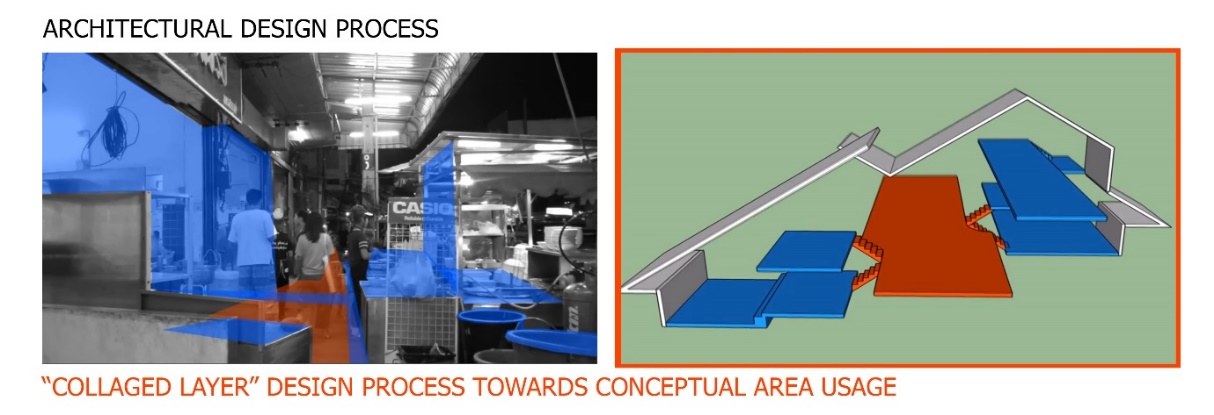New Feature of Mixed-use Design on Public Area: Case Studies from Chang Phuak Road to Moon Muang Soi 7, Chiang Mai Thailand
Main Article Content
Abstract
Mixed-use design is the design integration on urban development which provides flexibility program and manages diversity usage. By location based learning, mixed-use design feature is to converge physical design with fostering social on specific location. The aim of this article is to characterize mixed-use design on Thai urban context and summarize as the new design feature. On the area of study, researcher chooses Changpuank and Lamchang communities where both connect with Changphuak rd., Phrapokkloa rd. and Moonmuang soi 7. These areas belong to main North-south axis of the old city and have appeared diversity contemporary lifestyle on Chiang Mai public area. Besides, there have adjusted many conflicts between old communities, business-purpose activities and also local government by individual adjustments and community network. With these potentials, this research is set to reclaim the new understanding of public area design with the concept of mixed-use design. Furthermore, research finding is to analyze mixed-use design as new feature on public area in Chiang Mai. Research methodology is created by referring to spatial practice and neighborhood network concept theories. Each area usage reflects as spatial practicing which represents the relationship between government strategy and locals’ tactic. Towards situation based design, researcher has to understand on-site situations and analyzes through conditions of physical design and social relations. The study process provides with 3 sessions; (A) Case study selection is to select potential areas where appear shared space characteristic by street photograph, (B) Flexible use is on-site observation to understand organizing public area usages by interviewing and data collecting, (C) Mixed-use characteristic, this session sets to record street films to characterize mixed-use design feature on those area usages. Towards analysis session, researcher finalized architectural design feature by finalizing isometric section drawing to understand relations of physical design and social relations. These features aim to compromise conflicts and also improve functional programming on Chiang Mai public area.
Downloads
Article Details

This work is licensed under a Creative Commons Attribution-NonCommercial-NoDerivatives 4.0 International License.
All material is licensed under the terms of the Creative Commons Attribution 4.0 International (CC-BY-NC-ND 4.0) License, unless otherwise stated. As such, authors are free to share, copy, and redistribute the material in any medium or format. The authors must give appropriate credit, provide a link to the license, and indicate if changes were made. The authors may do so in any reasonable manner, but not in any way that suggests the licensor endorses you or your use. The authors may not use the material for commercial purposes. If the authors remix, transform, or build upon the material, they may not distribute the modified material, unless permission is obtained from JARS. Final, accepted versions of the paper may be posted on third party repositories, provided appropriate acknowledgement to the original source is clearly noted.
References
Bachelard, G. (1964). The Poetics of Space. New York: Orion Press. 185-192.
Baum, A & Valin, S. (1978). From Architecture & social behavior, Psychological studies of Social density. New York: John Wiley & Sons, Inc.
Climate change and infrastructure research unit of Chiang Mai University. (2014). Future of city planning in order of community and street by Chiang Mai people view [Climax City. “Urban regeneration” Compass Magazine] 12(132):10-22.
De Certeau, M. (1992). Part III: Spatial Practices. [The Practice of Everyday Life]. Berkeley: University of California Press. 91-130.
Grant, D. (2002). “Rethinking organizational change.” [Strategic Change online journal] (11)5: 237-242.
Kitika, C. (2018). “Community Network on Modern City Planning from the Comparison Study between Koiyama Community and Nimmanhaemin Community.” Journal of Faculty of Architecture King Mongkut’s Institute of Technology Ladkrabang] (24)2: 24-36.
Kitika, C. (2016). “Integrated Neighborhood Network on A Case Study of Condominium Community: Nimmanhaemin area, Chiang Mai Thailand.” International Review for Spatial Planning and Sustainable Development Journal (IRSPSD) 4(1): 106-122.
Kronenburg, R. (2004). Flexible Architecture: The Cultural Impact of Responsive Building. Indiana: Ball State University. 6-10.
Lefebvre, H. (2000). The production of space. New Jersey: Wiley-Blackwell. 169-228.
Niramon, K. (2008). A case study of Chiang Mai, Thailand [Sustainable City Regions: Space, Place and Governance] Japan: Springer Science + Business Media. 90-98.
Patricios, N. (2001). Urban design principle of the original neighborhood concepts [Urban Morphology]. Miami: University of Miami. 21-32.
Sanoff, H. (1991). Visual Research Methods in Desing (Routledge Revivals). Minnesota: Van Nostrand Reinhold. 9-16.
US Consulate General in Chiang Mai. (2013). Creative Chiang Mai Creative city Conference. Available at http://www.buyusa.gov/thailand/en/ceconf.html. Access on February 7th 2016.
The South of South Neighborhood Association (SOSNA). (2014). Neighborhood Identity and Purpose. Available at http://southofsouth.org/ARC. Access on March 7th 2016.


